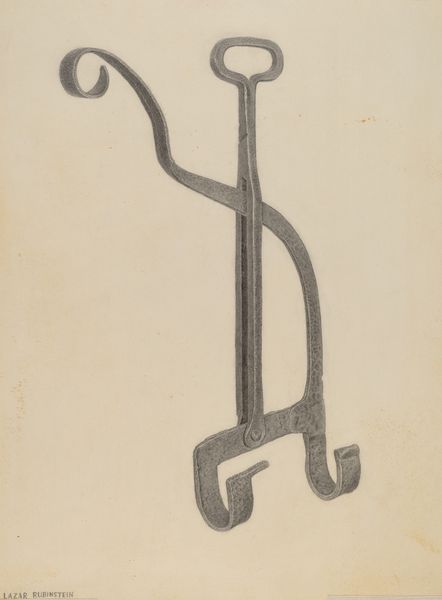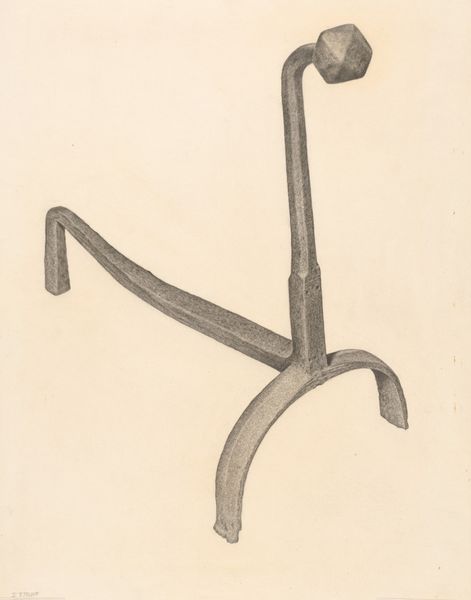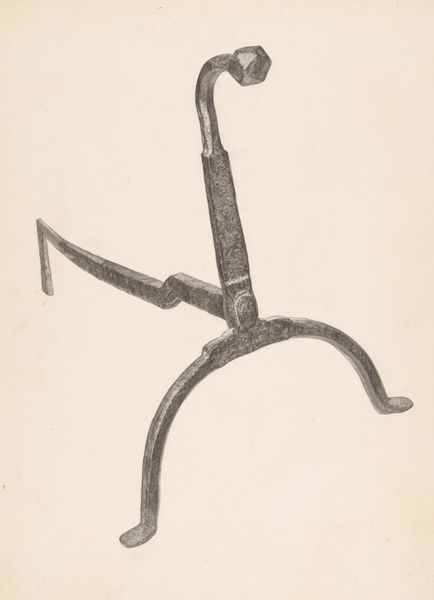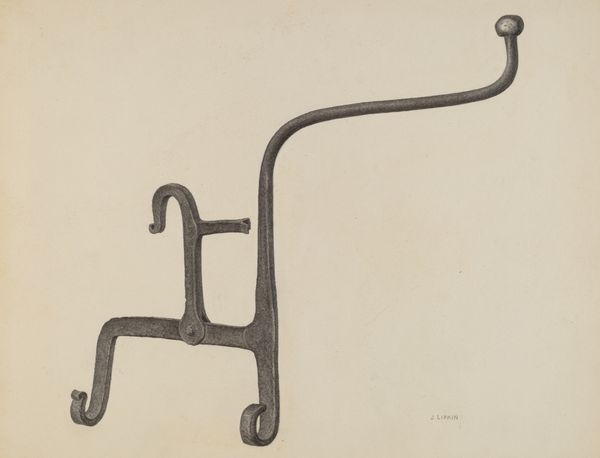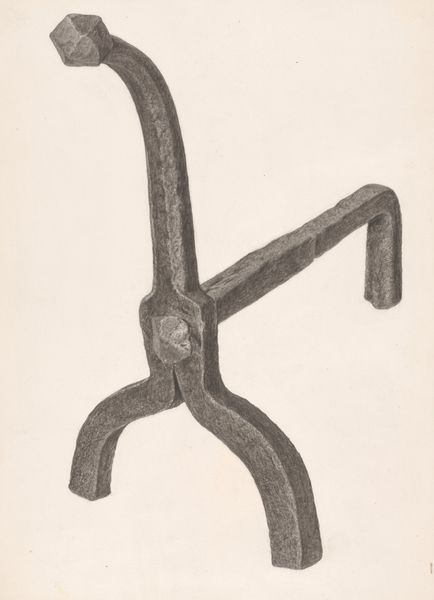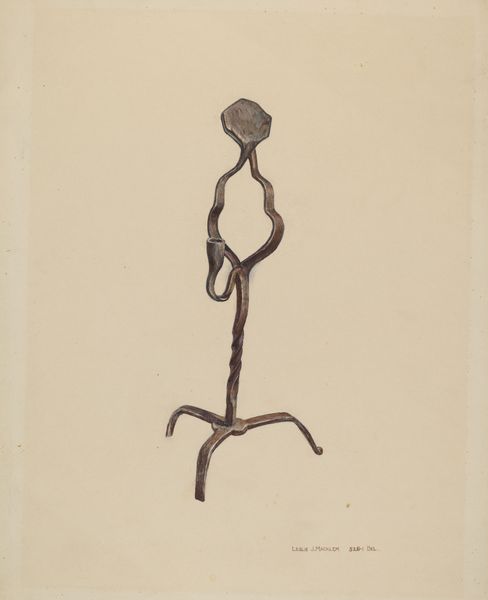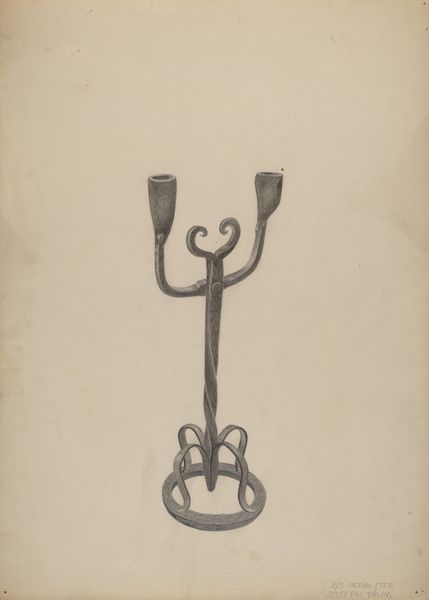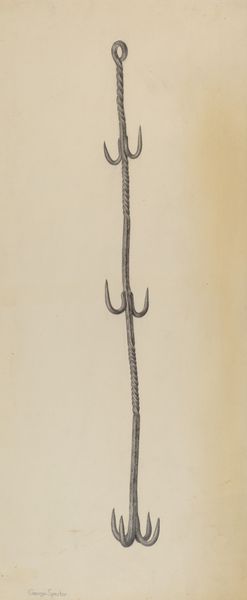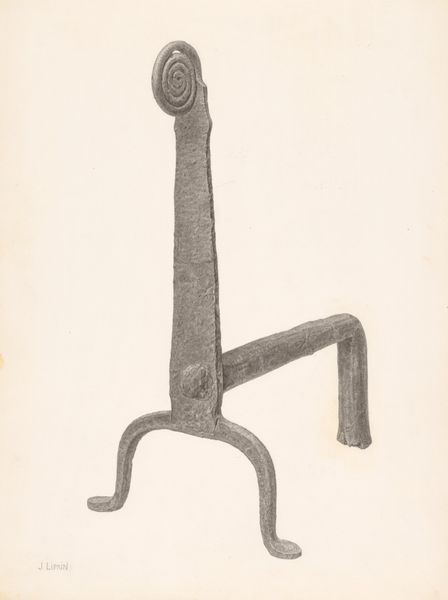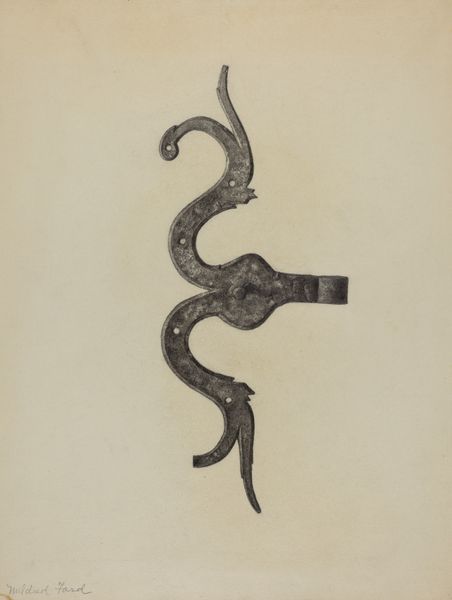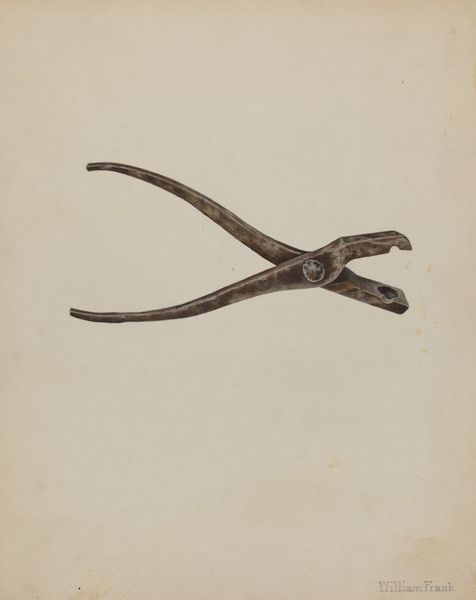
drawing, pencil
#
drawing
#
geometric
#
pencil
Dimensions: overall: 35.8 x 24.3 cm (14 1/8 x 9 9/16 in.)
Copyright: National Gallery of Art: CC0 1.0
Curator: This is Jacob Lipkin's pencil drawing, "Kettle Tilter," created around 1939. What’s your first impression? Editor: It has a strange grace to it. Utilitarian, definitely, but the lines, the twists...there’s almost a dance-like quality to the object's structure, and I can certainly see how a functional piece is abstracted using the subtle pencil work. The composition almost entirely focuses on it and highlights the complexity of a mundane subject. Curator: Yes, utilitarian is key. Before the advent of electric kettles, tools like this were essential in hearth cooking, acting as intermediaries between the cook and the heat, protecting hands. Editor: Note how Lipkin has emphasized certain lines with graphite. It amplifies the form but also guides the eye – top to bottom, observing those braided metal designs that repeat. It creates a subtle harmony of textures despite the stark medium. Curator: The twisted metal evokes strength and durability. There is a strong visual connection to a pre-industrial age; even something like intertwined metal hints at communal effort. Do you remember the last time a mass produced item had so much individual expression to its production? Editor: You’re right, there's that hand-crafted element resonating deeply. The geometry, too; see how circular forms balance against those more angular, twisting shapes above? A pleasing visual tension between organic and structural design. I appreciate his choice not to place the kettle tilter in an environment, it helps give a timeless feel. Curator: In a way it almost becomes a modern day reliquary or artifact from everyday life, made sacred by the artist. Lipkin gives us the language to consider how such a small item became crucial to so many hearths for warmth and food preparation. Editor: Thinking about that interplay of form and function is compelling, how beauty can be found in the everyday when the formal aspects come alive under his eye. A simple design yields so much meaning under such observation. Curator: And I find meaning in how its symbolism gives an insight into the culture, that something so familiar speaks to a distant history of people’s relationship with tools, domestic life, and fire. Editor: Indeed, and so we each find our meanings…both a historical record and testament to form made artful.
Comments
No comments
Be the first to comment and join the conversation on the ultimate creative platform.

